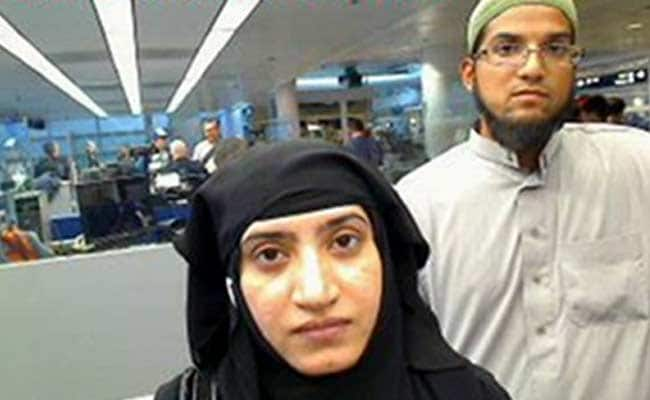
The phone was used by Syed Rizwan Farook, who, with his wife Tashfeen Malik, opened fire at a holiday party at the Inland Regional Center.
Quick Take
Summary is AI generated, newsroom reviewed.
Judge orders Apple to help unlock San Bernardino shooter's iPhone
Tashfeen Malik & Syed Rizwan Farook shot dead 14 in December '15
iPhone recovered from their car after they died in a gun battle with cops
The order does not ask Apple to break the phone's encryption, but rather to disable the feature that wipes the data on the phone after 10 incorrect tries at entering a password. That way, the government can try to crack the password using "brute force" - attempting tens of millions of combinations without risking the deletion of the data.
The order, signed by a magistrate judge in Los Angeles, comes a week after FBI Director James B. Comey told Congress that the bureau has not been able to open one of the killers' phones. "It has been two months now, and we are still working on it," he said.
The issue illustrates the frustration of law enforcement in gaining access to data in high-profile investigations, and raises the pressure on Apple to find a way to comply as the phone in question was used in the deadliest terrorist attack on U.S. soil since Sept. 11, 2001.
The Silicon Valley giant has steadfastly maintained it is unable to unlock its newer iPhones for law enforcement, even when officers obtain a warrant, because they are engineered in such a way that Apple does not hold the decryption key. Only the phone's user would be able to unlock the phone - or someone who knew the password.
The FBI's efforts may show just how impervious the new technology is to efforts to circumvent it. According to industry officials, Apple cannot unilaterally dismantle or override the 10-tries-and-wipe feature. Only the user or person who controls the phone's settings can do so. The company could theoretically write new software to bypass the feature, but likely would see that as a "backdoor" or a weakening of device security and would resist it, said the officials, who spoke on the condition of anonymity to discuss a sensitive matter.
The phone was used by Syed Rizwan Farook, who, with his wife Tashfeen Malik, opened fire at a holiday party at the Inland Regional Center, killing 14 people. The couple, who had pledged loyalty to the Islamic State, died a few hours later in a shootout with police.
FBI investigators recovered a number of electronic devices, including thumb drives, computer hard drives and Farook's cellphone. His phone belonged to the county public health department, where he was a health inspector.
Data that would be encrypted on the device include contacts, photos and iMessages. Having access to that material could shed light on why the couple picked the target they did, whether they were planning other attacks and whether they received any direction or support from overseas.
The phone ran on Apple's iOS9 operating system, which was built with default device encryption. When a user creates a password, say a 6-digit code, that phrase generates a key that is used in combination with a hardware key on a chip inside the phone. Together, the keys encrypt the device.
If the autowipe function is suspended, the FBI can run a massive number of combinations of letters, symbols and numbers until the right combination is found.
But there's a complication.
If the combinations are run on the phone itself, the process can be painfully slow, taking, according to Apple, 5 1/2 years for a six-digit lower-case password mixing numbers and letters.
If run on a supercomputer, it can be done many thousands of times faster. But to do it that way, the FBI would need the hardware key, which is built into the phone. Apple says it does not keep a copy of that key. To get that key, one could use a number of techniques, including melting the plastic off the chip and hitting it with bursts of lasers or radio frequencies to recover bits of the key.
Matthew Green, a cryptography expert at Johns Hopkins University, said the FBI could crack a six-digit numeric code in about 22 hours.
"But once there's numbers and letters, that's when things get interesting," he said. "It might take 10 years to crack a strong password on the phone, which means they might be stuck till 2026."
© 2016 The Washington Post
(This story has not been edited by NDTV staff and is auto-generated from a syndicated feed.)
Track Latest News Live on NDTV.com and get news updates from India and around the world

